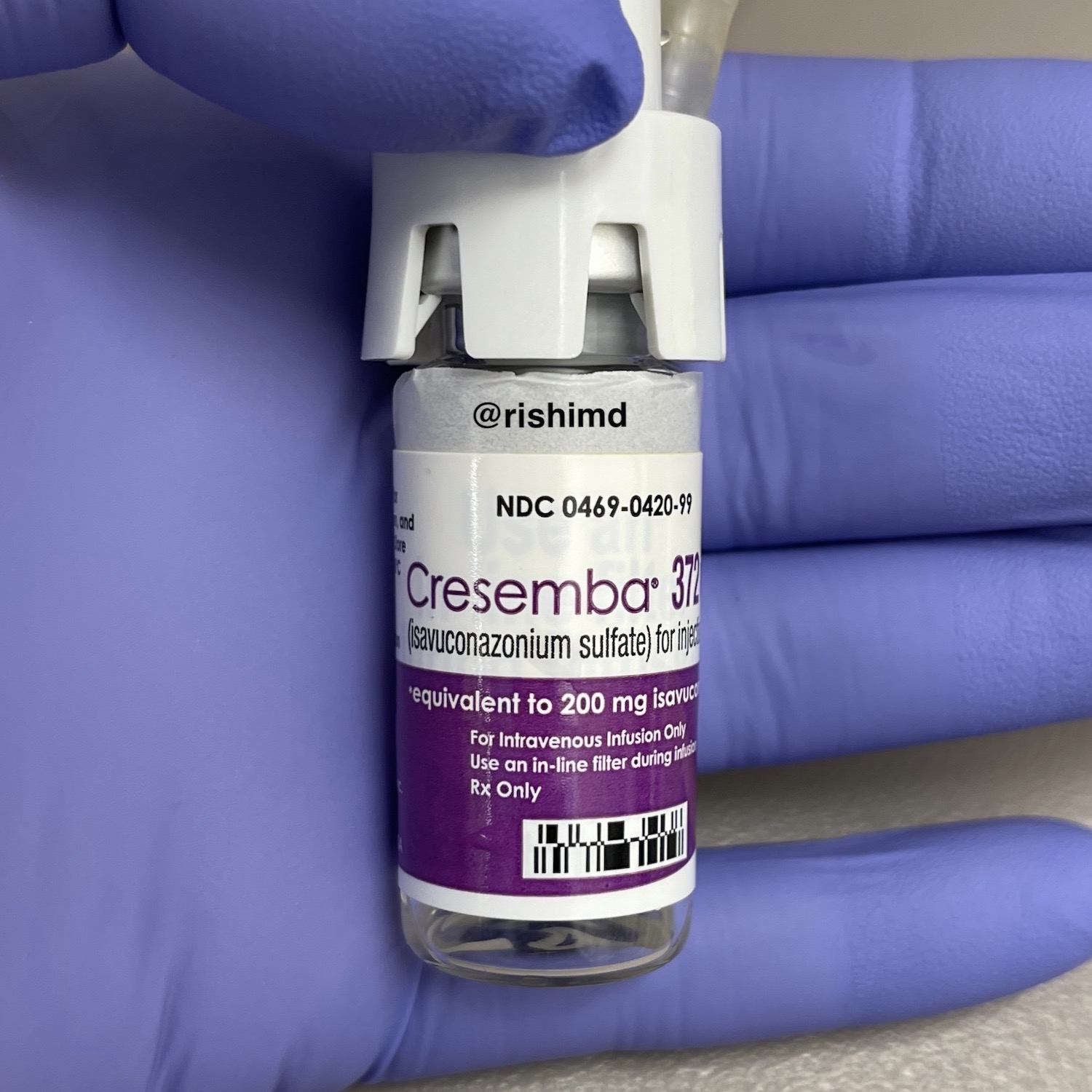Isavuconazonium (Cresemba) is an oral and intravenous antifungal agent used to treat invasive aspergillosis and mucormycosis in adult patients by disrupting fungal cell membrane formation. After it is converted to isavuconazole in the plasma, it inhibits lanosterol 14-α-demethylase which prevents lanosterol from getting converted to ergosterol. Isavuconazonium is also used off-label for prophylaxis against fungal disease processes.
Isavuconazonium’s most common side effects include GI symptoms (nausea, vomiting, diarrhea), hepatic failure, peripheral edema, hypokalemia, headache, and cough; however, these drug reactions seem to be less common than with voriconazole.
As with all antifungals, one must also consider how cytochrome P450 is involved in converting the drug to its active form, and what effects the drug itself has on the enzyme system. For example, isavuconazonium is converted into isavuconazole with CYP3A4/5 (look for medications that can potentiate or inhibit these enzymes)… but isavuconazole also induces CYP2B6 (as does carbamazepine, phenobarbital, etc.)
Drop me a comment with your experiences regarding isavuconazonium!






